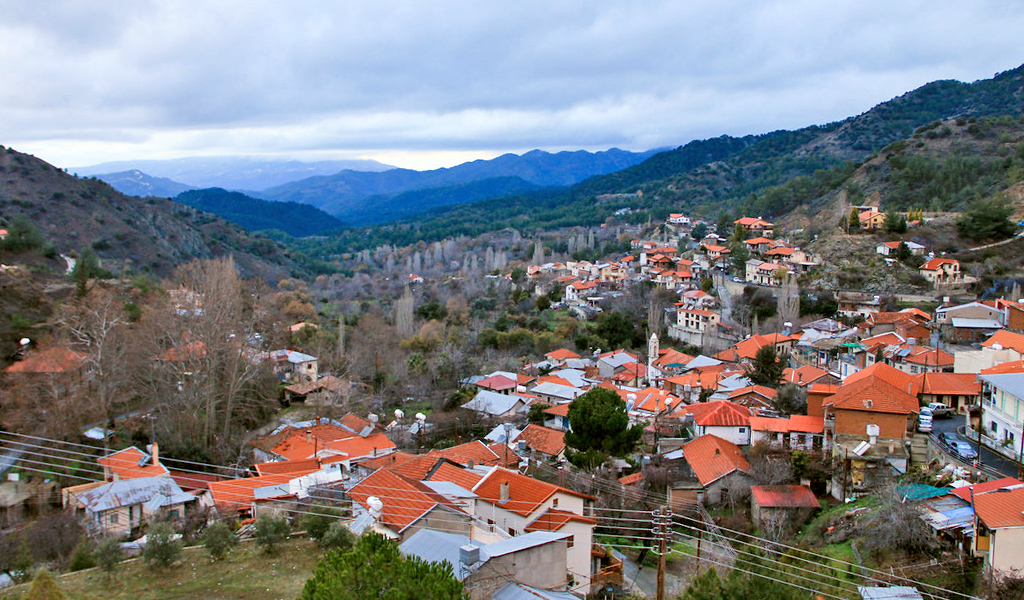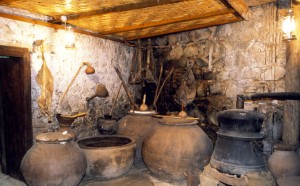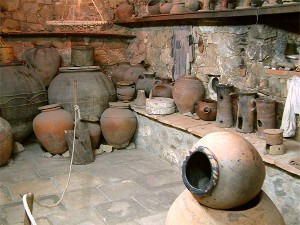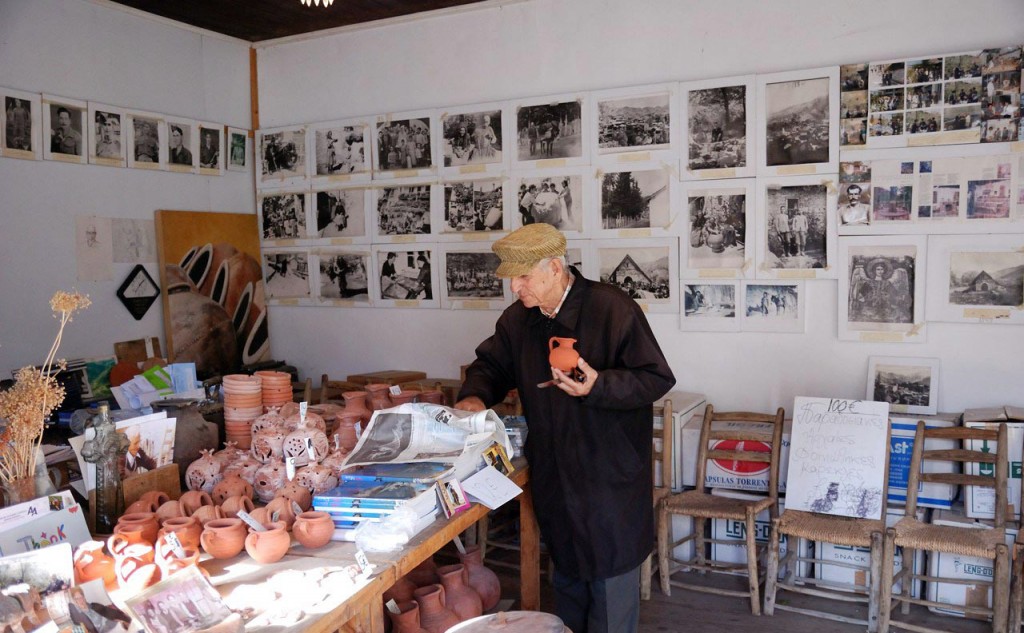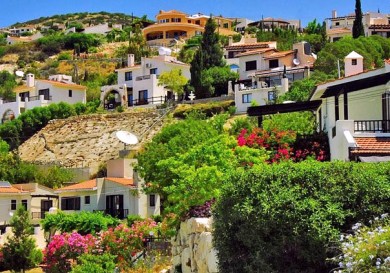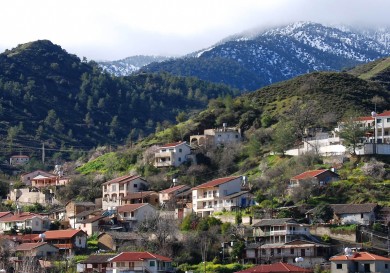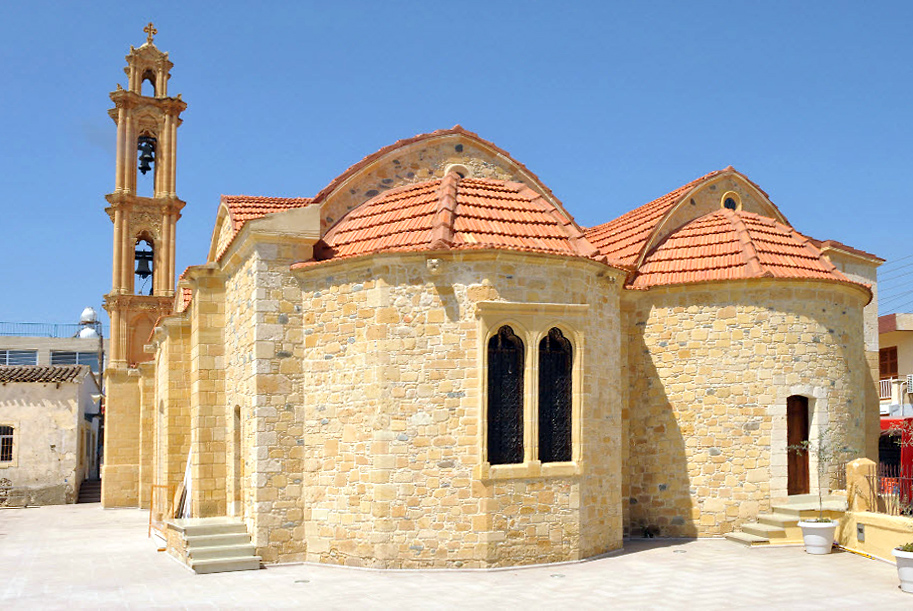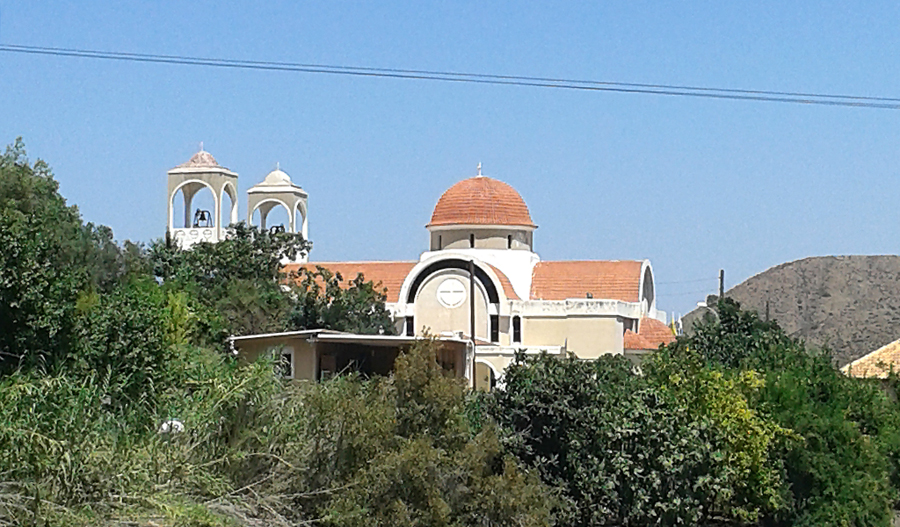Today we are travelling from Limassol and heading to the village of Foini. This place is where Cyprus’ most famous museum of Cypriot clay pots and utensils is located. But first things first.
From Limassol to Foini
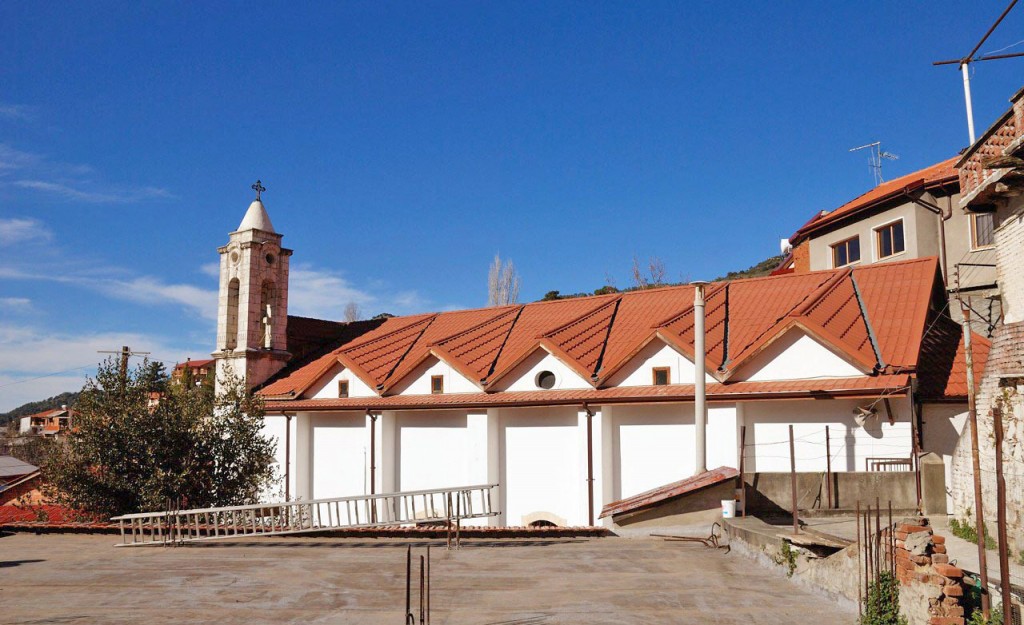
Leaving Limassol behind we are heading towards Troodos, where the village is hidden near the Chantara waterfall. Each Cypriot mountain village differs slightly from the others and has a colour of its own.
In only 40 minutes we are parking in the centre and heading for a cup of coffee before a visit to our main destination. It really is hard to pass by the village cafes, where you can receive an energy boost and spend time in a wonderfully pleasant and relaxing atmosphere.
Some say the name of the village comes from Juan De Fejniu, a franc feudal lord who owned the land, but another, more likely version, is that it’s in honour of the palm tree and its fruit, foiniki.
The museum of pottery in Cyprus
 So, we are leaving for the museum of pottery, owned by Theophanis Pilavakis and his wife, Nailya, from Kazan.
So, we are leaving for the museum of pottery, owned by Theophanis Pilavakis and his wife, Nailya, from Kazan.
The museum is located in an ancient house built in the 16th century. Real treasures hide here. Theophanis’ grandfather lived in this house when everything was done by hand.
The host and his wife make every effort to teach visitors about their favourite village and the pottery.
In 2004 the owners of the museum performed a miracle.
When he was 81, Theophanis and his wife made a huge handmade pot, a potbellied pot (pithoi). The clay used to make these possesses special properties – it contains silver, which is why the owners spent six months collecting it. It took 2 months and 3 days to make and holds almost 2,000 litres of wine.
It was recorded in the Guinness Book of World Records and visitors to the museum can still see this amazing pot.
When still a small boy, Theophanis Pilavakis watched his grandfather and grandmother work their magic over the pots. Many years have passed since then. Theophanis left Cyprus for London in 1953 with just 6 shillings in his pocket. 37 years later he returned, having become a successful designer in England and passing his business over to his son.
Back in Cyprus he wanted to create something he could share with his fellow villagers, something not only practical but also have lasting cultural value. This is how creating a museum associated with family values and the name (long honoured as skillful masters of pottery) came about. Pilavakis means ‘pot maker’ or ‘clay master’ in Greek.
Pilavakis’ old house is filled with the most surprising things – pots (the oldest dating back to 1731), village utensils, instruments, clothes and black and white photos all shrouded by the spirit of the past.
The owner shows us around the museum whilst telling us an amazing story about the history of the family and the Foini village. We can’t say exactly how long ago the production of pots started here, but Pheophanis can tell you about the last 400 years in detail.
Theophanis also had a brother, Ioannis, who made his last pot in 1972, and when he passed the current host has become the only master on the island who can make such an artful amphora. It’s with sorrow he tells us that the craft is dying out on the island. The master of foinitic chairs died years ago, and with him his art.
Pottery in Foini
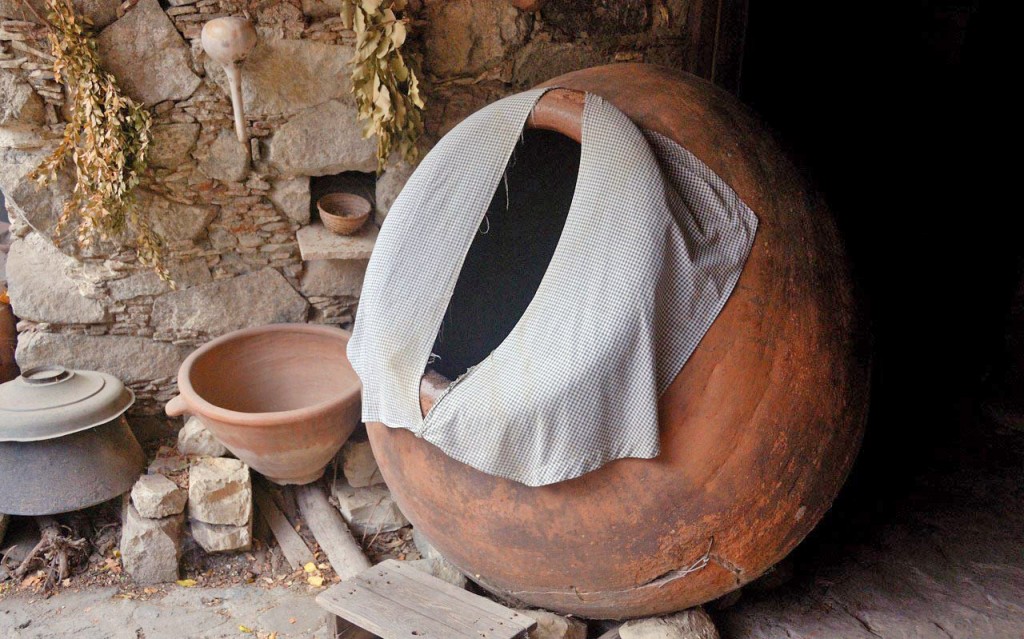
Pottery was of great importance for Foini. Grapes and other fruit and vegetables were grown on the island, but because of the poor soil the inhabitants of the village had to turn to pottery.
Families in Foini completely depended on making these amazing amphora, which became a profitable craft for most of them. Men molded pots, whilst the women made crockery for food, water and milk.
The pots were made of special pink clay containing silver, and of red clay containing copper, аs well as with special ceramic glazes with the addition of cedar, small pebbles and the use of soft water. Clay was collected in the region of Foini in February or March. All pots were handmade.
Not only wine and various food was kept in such pots, but also women! But only for an hour.
On the fourth day after childbirth, something similar to a bath-house was prepared using anamphorae. Its opening was covered by cloth to prevent the steam escaping. The pot was heated over wood and an infusion of eucalyptus leaf, laurel leaf, sage and myrtle was prepared. The woman sat for an hour on a cane chair inside the pot, her head sticking out of the opening, on each third day for 40 days. This is how the women recuperated and regained their former shape. After the ‘sauna’, the belly was swathed with a linen belt, and the woman had to sleep on a hard wooden bed for about 4 hours. The miraculous clay pulled all toxins out and restored the body back to health.
Lunch at a trout farm
These are the secrets carefully kept by the master of his craft and now lunch is nearing.
When you come to Foini, you must visit the famous trout farm, and have lunch with its owner Augustine, in a wonderful Foini Tavern, where you will be treated to traditional Cypriot dishes and magnificent steaks.
This is how our journey ends, but not for long. The island keeps so many extraordinary mysteries, which it will share with pleasure with those who want to discover them!




